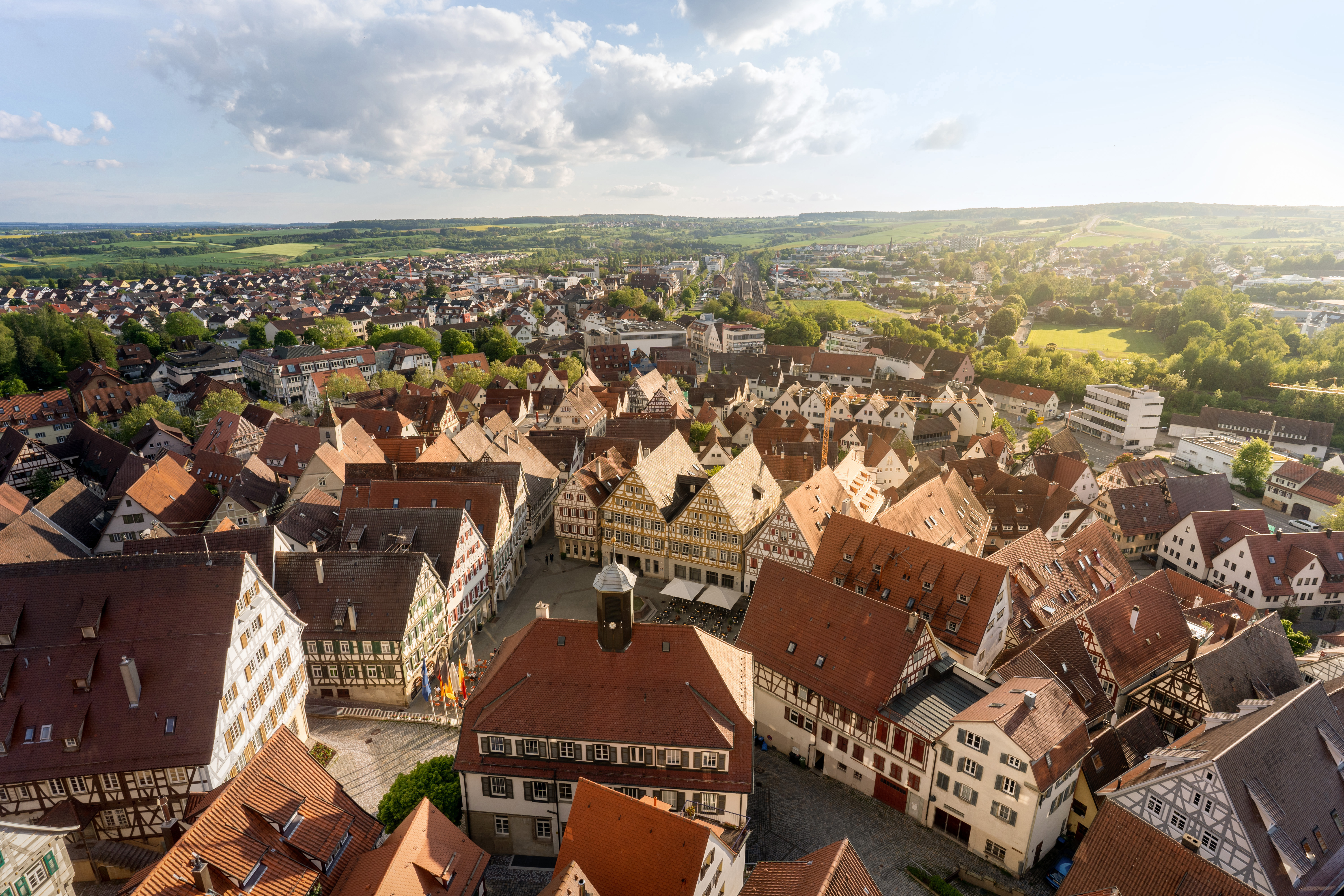Tracing History
The whole region offers a host of options for wonderful journeys of discovery: excursions to the picturesque small towns in the area give some idea of its historical diversity.
Schwäbisch Hall
Schwäbisch Hall, known to its residents simply as "Hall", is an idyllic little town. It is famous for the Heller coin named after it and for its salt traders, as well as for its open-air theatre productions on the broad steps of St. Michael's Church. Schwäbisch Hall boasts an impressive medieval core with covered bridges, half-timbered buildings and narrow alleyways. Here, history comes alive at every turn. The Marketplace is one of the finest in Southern Germany. The Hällisch-Fränkische Museum, which is housed in seven historical buildings, vividly illustrates the history of the town and its environs. Grosscomburg Monastery, enclosed by a 420-metre-long accessible wall walk, contains an art treasure of international standing in the form of a Romanesque wheel chandelier. The rural traditions of former generations live on at the Hohenlohe Open-air Museum in Wackershofen, where 70 historical buildings from five centuries, arranged in various architectural groupings, blend harmoniously into the extensive grounds of the museum village.
Backnang
Backnang's main landmark and the most striking feature of its skyline is its city tower. The lower section contains the painstakingly restored, 13th-century Gothic choir of the former Church of St. Michael, with a polygonal ground-plan, nine-segment rib vaulting and ornate capitals. The tower was renovated in 1614 by the then state architect Heinrich Schickhardt. After being destroyed in a town fire in 1693, it was rebuilt in 1699 in accordance with Schickhardt's plans. A mezzanine floor of the city tower contains an exhibition on the history of the town. Another highlight: the view from the tower gallery over the whole town.
Bietigheim
Nestling in the gently rolling hills, woods and vineyards of the surrounding countryside is the historical town centre of Bietigheim, which has evolved over the course of several centuries. The town hall dating from 1507, the municipal museum in the Hornmoldhaus and the Latin School together make up an ensemble that defines the townscape. From here the road leads up to the New Palace, the parish church, the winepress and the Lower Gate – the only access to the town to have survived from medieval times. Via the partly walkable city wall, which also affords a wonderful view of the Enz viaduct, built in 1835, one arrives at the Japanese Garden.
Herrenberg
Herrenberg, which lies on the edge of the Schönbuch, Baden-Württemberg's oldest nature reserve, looks back on nearly 800 years of history. The city's special flair is defined by its historical town centre, the whole of which was made a protected monument in 1983. Nestling against the Schlossberg (Castle Hill), the town and its half-timbered, medieval buildings have survived in their entirety. The Stiftskirche (Collegiate Church) with its large onion cupola is the town's main landmark and Württemberg's first Gothic hall church. The church tower contains the Bell Museum – with 30 ringable bells from 12 centuries. The former high altar from the Stiftskirche, the so-called "Herrenberg Altarpiece" created by Jerg Ratgeb in 1519, is now to be found at the State Gallery in Stuttgart.
